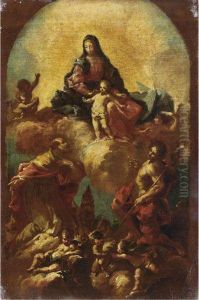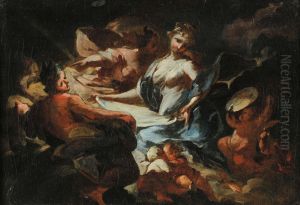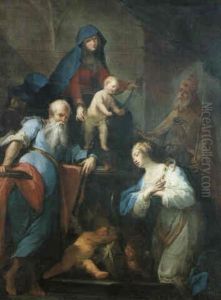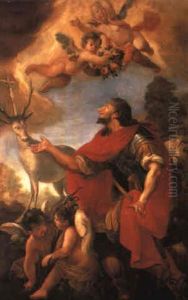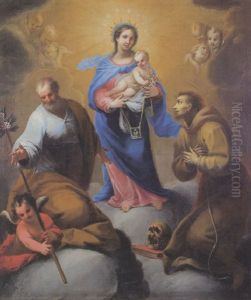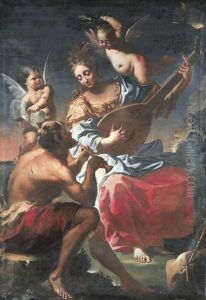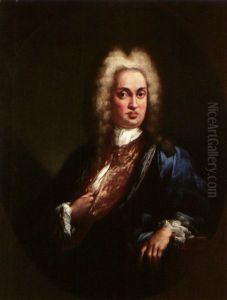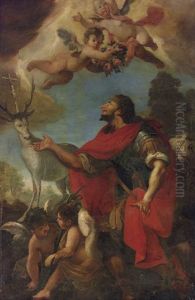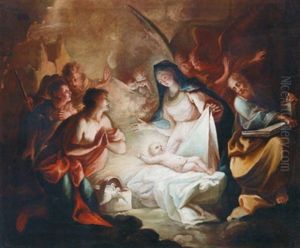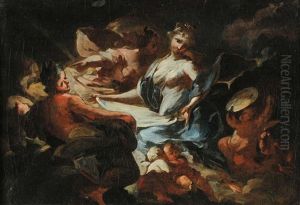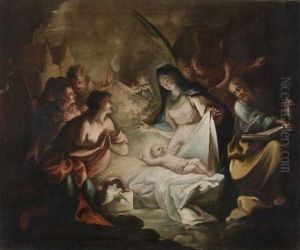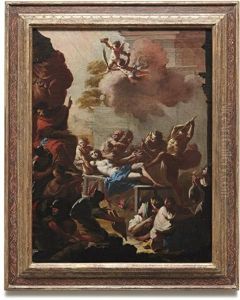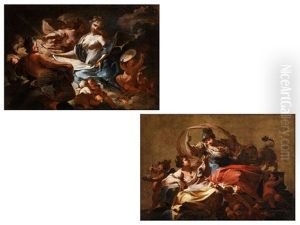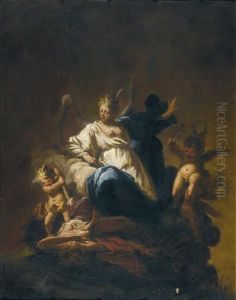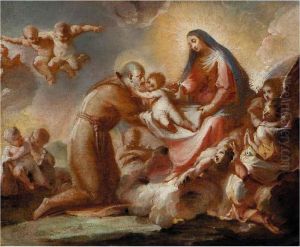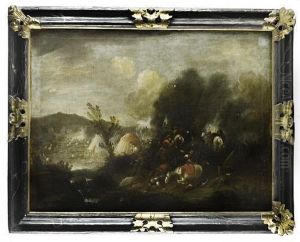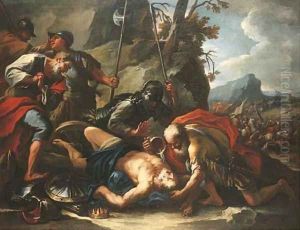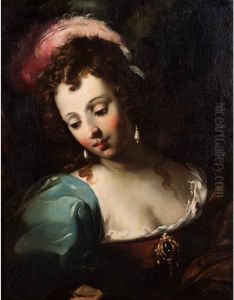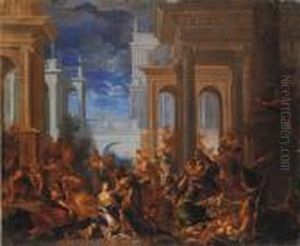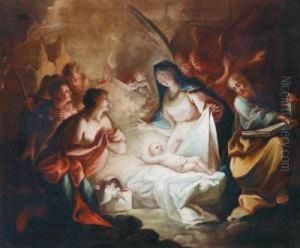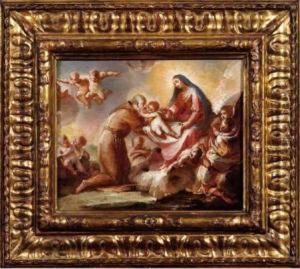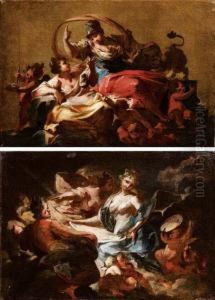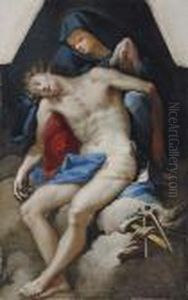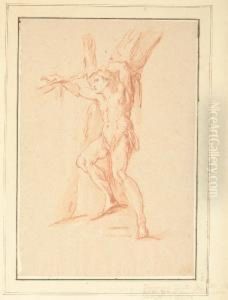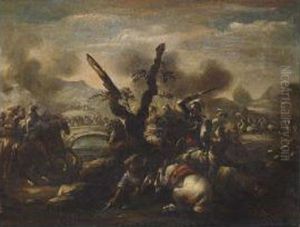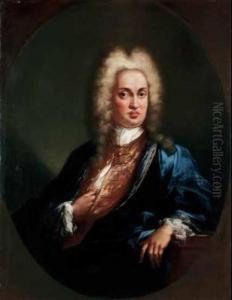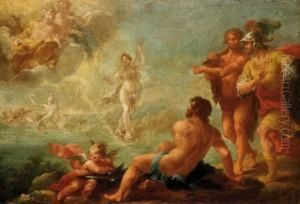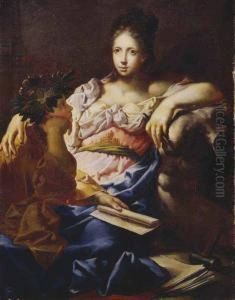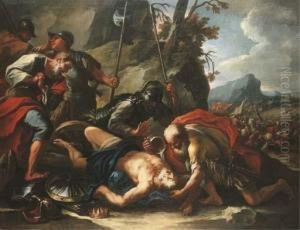Francesco Conti Paintings
Francesco Conti was an influential Italian painter of the late Baroque period, known for his dynamic and expressive works that contributed significantly to the art scene of his time. Born in 1681 in Florence, Italy, Conti showed an early penchant for the arts, which led him to pursue a career in painting. He trained under prominent artists of the era, absorbing the rich traditions of the Italian Baroque while developing his distinctive style.
Conti's work is characterized by its vibrant energy, intricate details, and the dramatic use of light and shadow, elements that became hallmarks of his artistic identity. Throughout his career, he produced a vast body of work that included religious and mythological scenes, portraits, and historical paintings. His ability to convey emotion and movement made his religious compositions particularly revered, often depicting scenes with a sense of immediacy and intensity that engaged viewers directly.
In the early 1700s, Conti moved to Rome, which was then the heart of the artistic world. This period was crucial for his development as an artist, as he was exposed to the works of the great masters and the cutting-edge ideas of his contemporaries. Rome offered him a wider audience and more prestigious commissions, which included works for churches, private patrons, and members of the aristocracy. His reputation grew, and he became known for his inventive compositions and skillful execution.
Despite his success, Conti's life was not without challenges. He navigated the complexities of the art world and patronage systems of his time, competing for commissions and recognition amidst a backdrop of political and social change. Nevertheless, his commitment to his craft and his innovative approach to painting ensured his place in the annals of art history.
Francesco Conti's contributions to the Baroque movement cannot be overstated. His works are celebrated for their emotional depth and technical brilliance, qualities that have endured in their appeal over the centuries. He died in 1760, leaving behind a legacy that continues to inspire and captivate art lovers and scholars alike. Today, his paintings can be found in museums and collections around the world, testament to his enduring influence on the artistic landscape.
